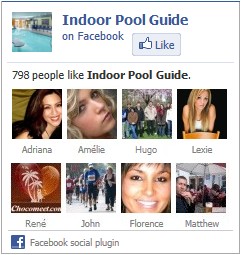
Ozone was first used as a water sanitizer in France in the early 1900s. It is the most popular method of treating drinking and pool water throughout Europe. Ozone is one of the strongest oxidizers available for treating swimming and spa water and is growing in popularity in the U.S.A. It kills bacteria and oxidizes organic compounds including chloramines, soaps, oils and bather wastes and does not alter the water’s pH. Due to limitations of the amount of ozone that can be economically introduced to pool and spa water, algae growth is not eliminated and may possibly increase.
Two systems have been developed for the production of ozone for pool and spa water. The most common European method – and the most expensive – is the Corona Discharge. This method generates ozone by exposing pressurized, dried air to highvoltage electricity. The ozone gas is then directed into the bottom of the pool and seen as very small bubbles rising to the surface. The ozone can be introduced into a separate chamber or directly to the pool.
The Ultraviolet (LTV) or photochemical method of ozone production passes the pressurized, dried air next to a UV bulb within a chamber, where the UV rays bombard the oxygen molecules and produce ozone. A single LTV lamp is capable of treating approximately 10,000 gallons of water. The UV method is more common for spas or private small pools and is less expensive to operate. The LTV method cannot match the output of the Corona Discharge method.
Once it has done its job as an oxidize r, ozone reverts to oxygen and improves both smell and taste of the water. This factor is worth noting, especially for indoor pools. Ozone has to be continually generated, because its effectiveness is about 22 minutes while the gas remains in the water. Ozone offers no continuous residual, and because it is not effective against algae growth, most manufacturers recommend that ozone be introduced with a halogen such as chlorine or bromine.
Testing of ozone residual is in parts per billion (ppb). Test kits are available that use DPD as the reagent and color calibrations that indicate readings from 0 to 100 ppb. Testing with the use of an Oxidation Reduction Potential (ORP) meter is effective, and a minimum level of 650 millivolts is recommended. Because ozone of the smallest residual is effective and adequate for treating water, when combined with chlorine or bromine, a test reading of either is an indication of the effectiveness of the ozone.

